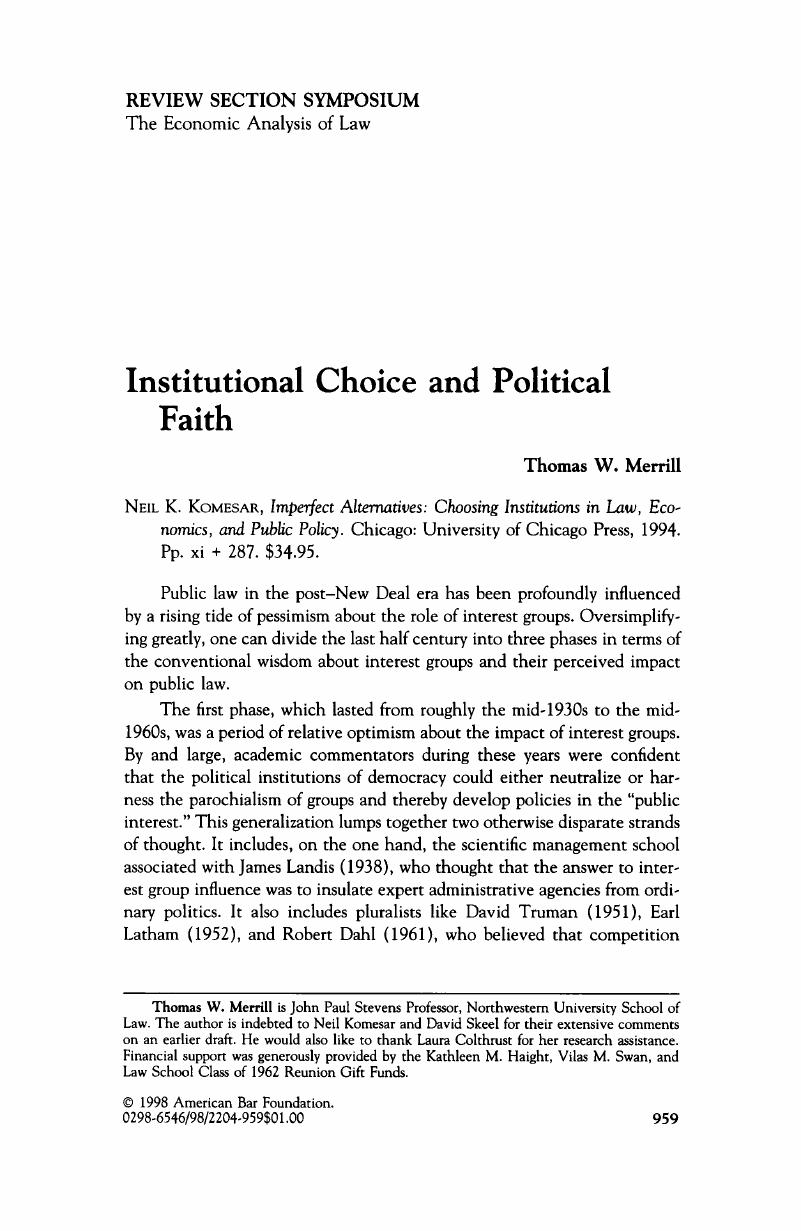Crossref Citations
This article has been cited by the following publications. This list is generated based on data provided by Crossref.
Zywicki, Todd J.
2000.
Public Choice and Tort Reform.
SSRN Electronic Journal ,
Zywicki, Todd J.
and
Kidd, Jeremy
2010.
Meaningful Tort Reform: A Public Choice Analysis.
SSRN Electronic Journal,
Garoupa, Nuno M.
and
Morriss, Andrew P.
2011.
The Fable of the Codes: The Efficiency of the Common Law, Legal Origins & Codification Movements.
SSRN Electronic Journal,





